Introduction
HMS Vanguard is the first United Kingdom submarine equipped to carry the Trident missile system. Constructed by Vickers Shipbuilding at Barrow-in-Furness, she was commissioned into the Royal Navy on 14 August 1993.
Vanguard also lent her name to the entire class of four submarines designed to maintain the UK’s nuclear deterrent from the 1990s into the twenty-first century. Her sister vessels are HMS Victorious, HMS Vigilant, and HMS Vengeance.
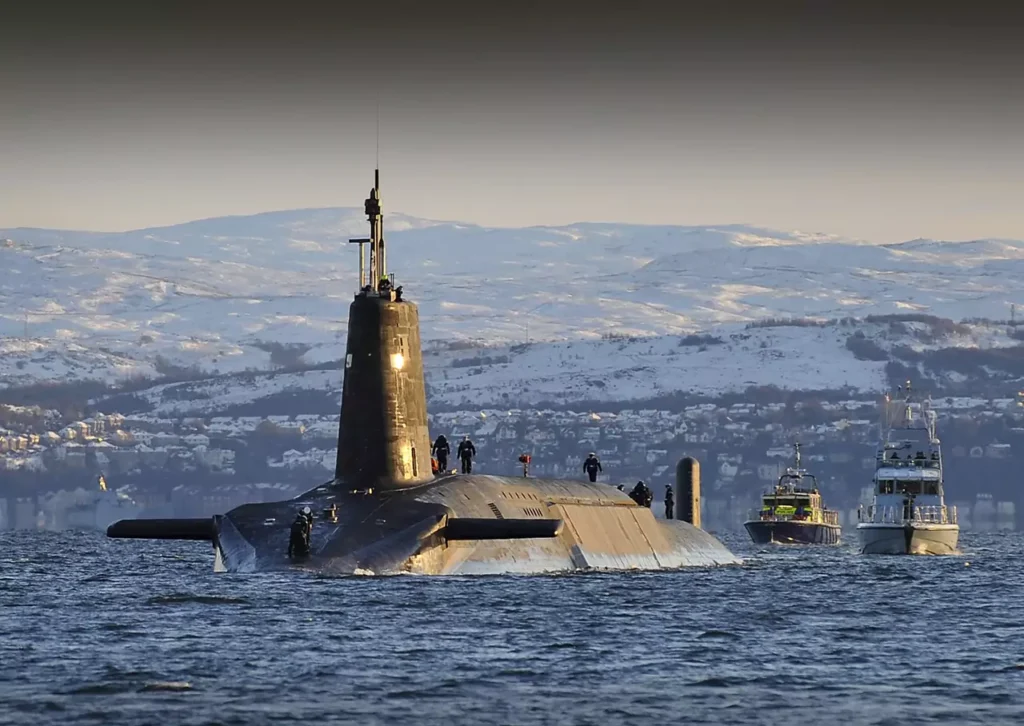
In May 1994, HMS Vanguard conducted the UK’s first test launch of a Trident D5 missile off the coast of Florida. She embarked on her first operational Trident patrol in December 1994.
The Vanguard-class submarine carries sixteen Trident II (D-5) submarine-launched ballistic missiles. Each missile is equipped with multiple independently targeted re-entry vehicles (MIRVs), each capable of delivering a destructive yield of 100 kilotons.
Namesake
The name Vanguard holds an honored and illustrious place in Royal Navy history, with distinctions from the Spanish Armada to Jutland. The current submarine is the tenth British warship to carry this distinguished name.
The earliest HMS Vanguard was a heavily armed galleon introduced in 1587. Rated at 500 tons and equipped with 42 guns, this vessel notably participated in the destruction of the Spanish Armada in 1588.
Another renowned bearer was a late 18th-century third-rate ship of 1,609 tons armed with 74 guns. Built at Deptford in 1787, this ship served as Admiral Lord Nelson’s flagship during his decisive victory over the French fleet at the Battle of the Nile in August 1798.
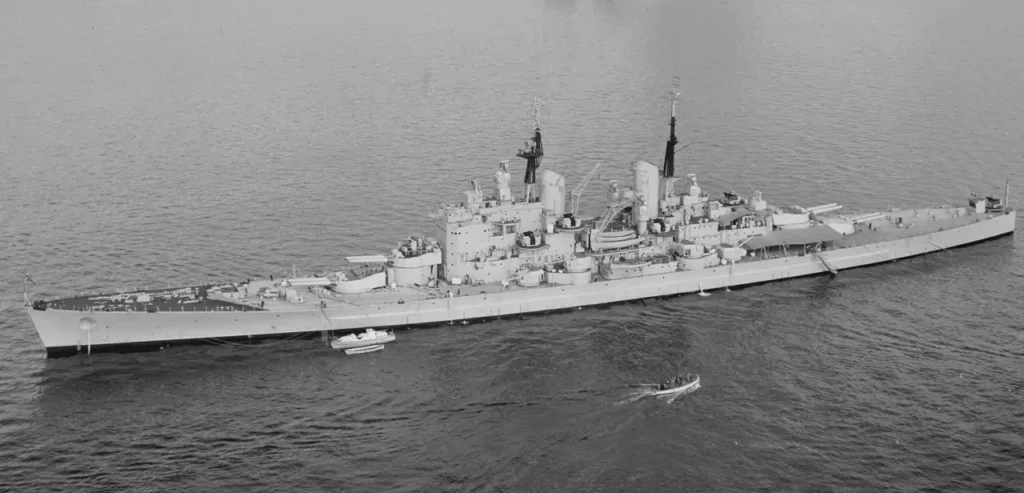
An unfortunate HMS Vanguard was a Victorian battleship launched at Birkenhead in 1870, with an iron hull, partially steam-powered, and displacing 6,010 tons. On 1 September 1875, she collided in dense fog with her sister ship, HMS Iron Duke, in the Irish Sea, and sank. All crew members survived, but her captain, Richard Dawkins, faced court-martial for negligence and never commanded again.
The ninth HMS Vanguard, launched in November 1944 by Her Majesty The Queen (then Princess Elizabeth), was the largest and last of Britain’s battleships. Designed by Sir Stanley Goodall, she displaced over 50,000 tons and measured 814 feet (248 m).
Armed with eight 15-inch (38-cm) guns originally mounted on HMS Glorious and HMS Courageous in 1917, along with sixteen 5.25-inch (13-cm) guns, she achieved speeds of up to 29 knots. Although commissioned in 1946 at a cost of £9 million, she saw no combat action and served primarily as a training vessel before being scrapped in 1960, marking the end of battleship service in the Royal Navy.
Official Badge
Field: Blue
Badge: Issuing from barry of four white and green, a demi-lion gold supporting a spear issuing white.
Motto: “We lead”
The badge design is inspired by the historical tradition of Royal Navy vessels bearing a lion figurehead, a longstanding naval custom. The green and white bars symbolize the Tudor colors, referencing the first HMS Vanguard, constructed during the reign of Queen Elizabeth I.
Specifications
The Vanguard-class submarines are the largest ever constructed for the Royal Navy, measuring 150 meters in length with a submerged displacement of approximately 15,900 tonnes. Each submarine exceeds the size of a Boeing 747 jumbo jet by more than twice.
Propelled by a second-generation Rolls-Royce PWR2 nuclear reactor, these submarines can achieve speeds greater than 25 knots. The reactor system heats seawater to generate steam, powering the vessel through the water with significant stealth and endurance.

Each submarine is equipped with 16 missile launch tubes, each capable of housing a single three-stage, solid-fuel Trident II D5 ballistic missile. Each missile is about 13 meters long, 2 meters in diameter, and weighs approximately 60 tonnes.
The Trident missile system has a maximum operational range of between 6,500 and 12,000 kilometers, with an estimated accuracy, or circular error probable (CEP), of around 90 meters. To support sustained operations, each submarine operates with two separate crews (Port and Starboard), facilitating efficient management of patrol duties, crew rest, and ongoing training.
Construction & Commissioning

- Builder: Vickers Shipbuilding & Engineering (VSEL), Barrow-in-Furness, England.
- Cost: £ 650 million.
- Ordered: 30 April 1986
- Keel laying ceremony: 3 Sep 1986
- Sponsor: Diana, Princess of Wales
- Launched: 4 Mar 1992
- Sea trials start: 23 October 1992
- Commissioned: 14 Aug 1993
Service
- May 1994 HMS Vanguard launches first UK test firing of a Trident D5 missile off Florida.
- December 1994 HMS Vanguard sails on first Trident operational patrol.
- In November 1998, HMS Vanguard became the first Royal Navy SSBN to visit Gibraltar.
- Vanguard collided with French SSBN Le Triomphant on about 4 February 2009 and sustained superficial damage.
Assignments
| Dates | Unit | Location |
|---|---|---|
| 14 Aug 1993 - Present | 1st Submarine Squadron (SM1) | Clyde Submarine Base, Faslane |
Overhauls
HMS Vanguard was scheduled to receive refueling overhauls and major maintenances during her lifetime:
| Location | Start | End | Comments |
|---|---|---|---|
| HM Naval Base Devonport | Feb 2002 | Jun 2005 | Long Overhaul Period and Refuel (LOP(R)) |
| HM Naval Base Devonport | December 2015 | May 2023 | Life-extension (LIFEX) |
Missile Launches
British submarines conduct their missile flight tests at the U.S. Eastern Test Range, located off the coast of Florida. HMS Vanguard carried out the United Kingdom’s first two successful Demonstration and Shakedown Operations (DASO) in May and June 1994, launching two missiles.

DASO are designed to rigorously test and certify the readiness of the crew, equipment, and the missile system for operational service.
| # | Date | Type | Missile | Status |
|---|---|---|---|---|
| 1 | 26 May 1994 | DASO | Trident D5 | Successfull |
| 2 | 19 June 1994 | DASO | Trident D5 | Successfull |
| 3 | 10 October 2005 | DASO | Trident D5 | Successfull |
| 4 | 30 January 2024 | DASO | Trident D5 | Failure |
Photo Gallery
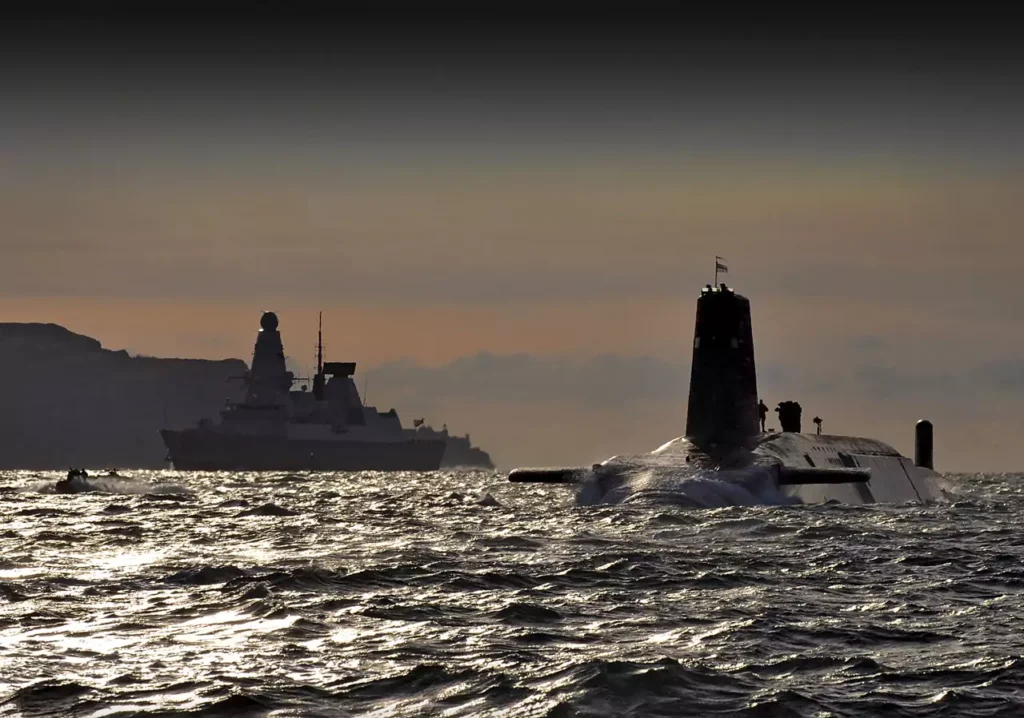
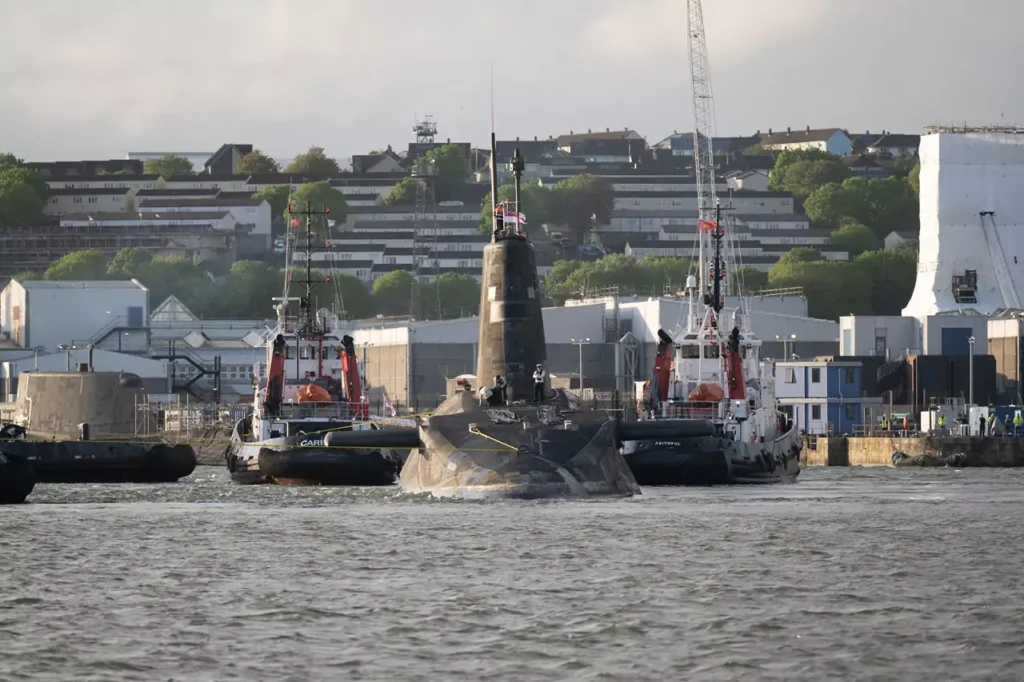
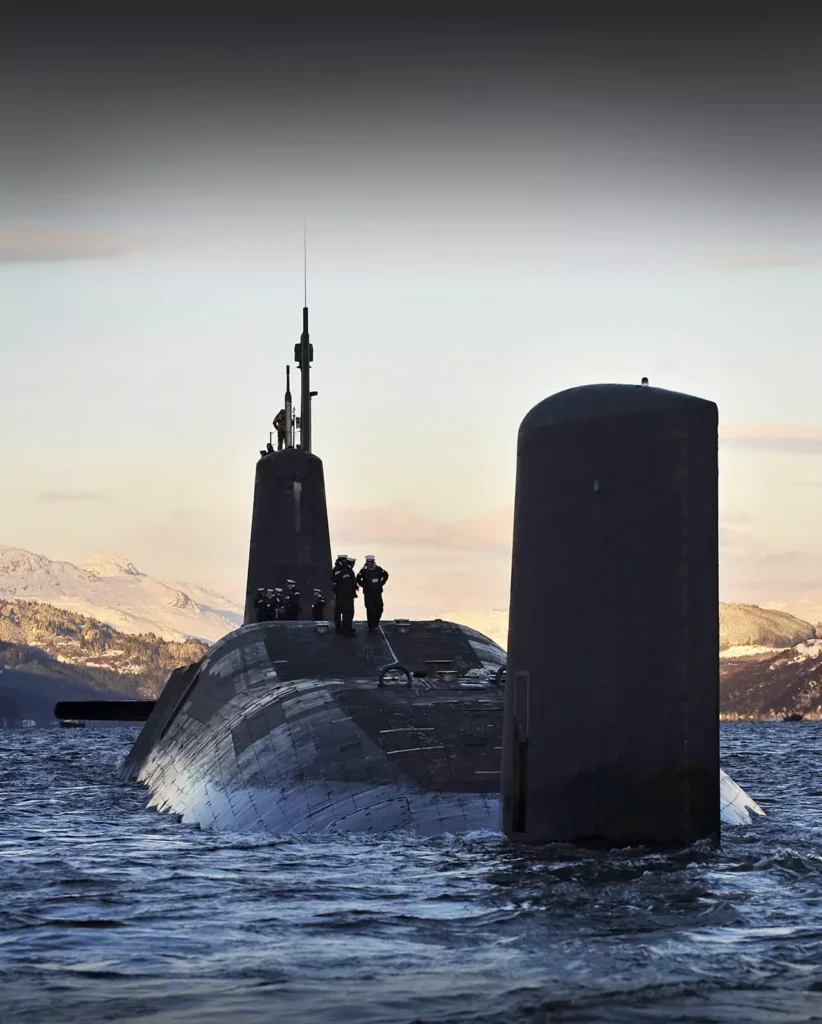
Further Reading
- Vanguard Class of Ballistic Missile Submarines
- Trident II D-5 (UGM-133A)
- 1st Submarine Squadron (SM1)
Other ships of the class:
Bibliography
- Saunders, S., Philpott, T. (2015). Jane’s Fighting Ships 2015 2016: Yearbook. United Kingdom: Ihs.
- Friedman, N. (2020). British Submarines in the Cold War Era. United Kingdom: Pen & Sword Books.
- Jinks, J., Hennessy, P. (2015). The Silent Deep: The Royal Navy Submarine Service Since 1945. United Kingdom: Penguin Books Limited.
- Weightman, A. E. (1957). Heraldry in the Royal Navy: Crests and Badges of H. M. Ships. United Kingdom: Gale and Polden.
- Burns, K. V. (1986). Badges and Battle Honours of HM Ships. United Kingdom: Maritime Books.